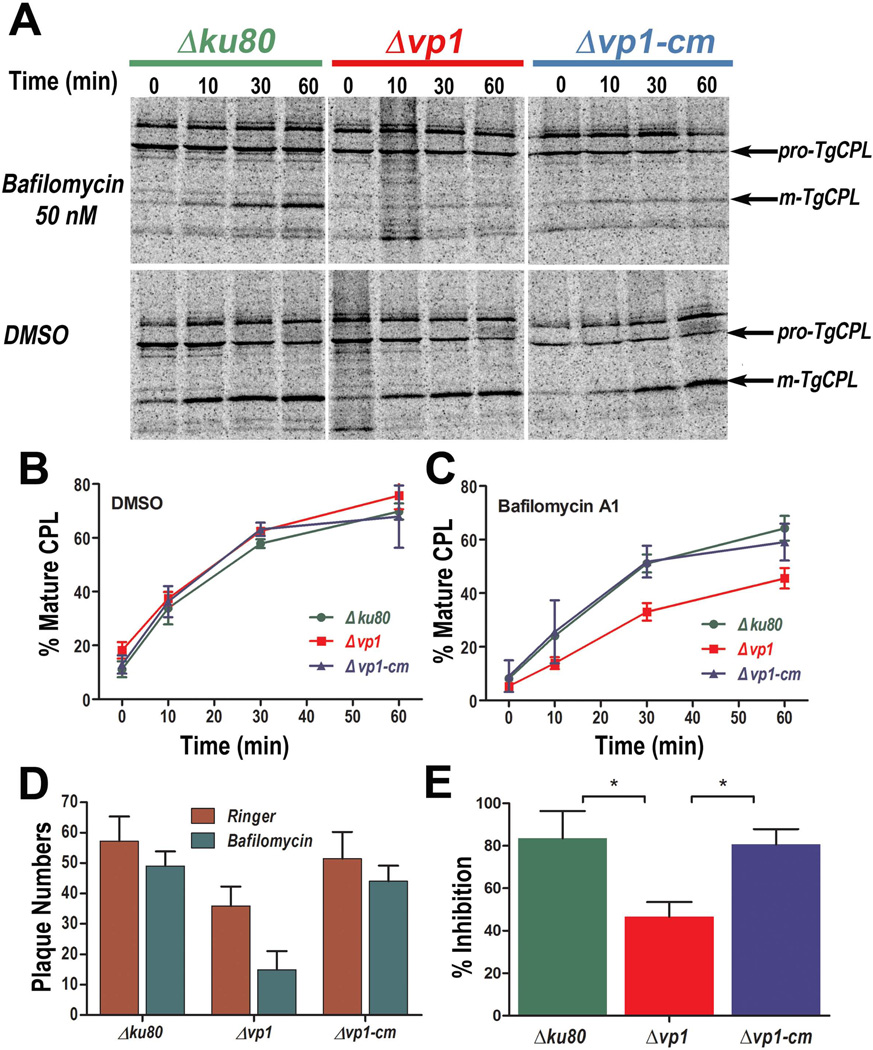Fig. 4.
Δvp1 tachyzoites have a TgCPL maturation defect in the presence of bafilomycin A1. (A) Tachyzoites were pre-incubated for 15 min with 50 nM bafilomycin A1 or DMSO as control. Metabolically pulse-labeled tachyzoites from Δku80, Δvp1 and Δvp1-cm clones were either kept on ice (0 min) or chased with medium containing unlabelled Met/Cys for the indicated times (10, 30 or 60 min). CPL proteins were immunoprecipitated and analyzed by SDS-PAGE and autoradiography. Arrows indicate positions of the immature (pro-TgCPL) and mature (m-TgCPL) forms of CPL. Tachyzoites of the Δvp1 clone show impaired maturation of pro-TgCPL after blocking TgVATPase with bafilomycin A1. (B, C) Quantification of TgCPL maturation in tachyzoites from Δku80, Δvp1 and Δvp1-cm clones for each chase time point in the absence (B, DMSO) or presence (C) of 50 nM bafilomycin A1. Values are mean ± SD. Data shown are the combined results of three independent experiments. (D) Plaque numbers after pre-incubation of tachyzoites from Δku80, Δvp1 and Δvp1-cm clones in Ringer buffer contain 50 nM bafilomycin A1. The effect of bafilomycin A1 was more severe in tachyzoites from the Δvp1 clone. (E) Percentage of plaques as compared with controls without bafilomycin A1 considered as 100%, after incubation of tachyzoites of the different clones in Ringer buffer. Tachyzoites from all clones produced ~20% less plaques after incubation with bafilomycin A1 but tachyzoites from the Δvp1 clone produced ~55% less plaques than tachyzoites from Δku80 and Δvp1-cm clones. Data are the combined results of three independent experiments. Data were analyzed by GraphPad Prism 5. To compare two groups of data we used One-Way ANOVA test. *, p <0.05; **, p <0.01; ***, p <0.001.

